From Marrakech to Merzouga: The Perfect Road Trip Across Morocco
There’s no better way to experience Morocco’s breathtaking diversity than by hitting the open road — from the bustling souks of Marrakech to the golden dunes of Merzouga. This epic journey takes you across the High Atlas Mountains, through ancient kasbahs, lush valleys, and arid desert landscapes, revealing the country’s soul at every bend.
Stretching roughly 560 kilometers (around 350 miles) from Marrakech to the edge of the Sahara Desert, this road trip is more than a route — it’s an adventure through time, culture, and nature. Along the way, travelers encounter Berber villages clinging to mountain slopes, palm-filled oases, and cinematic desert towns where life moves to the rhythm of the wind and sand.
Whether you’re traveling by car, private driver, or organized desert tour, the Marrakech to Merzouga journey offers a unique window into Morocco’s contrasts — from the snow-dusted peaks of the Atlas to the infinite dunes of Erg Chebbi.
In this guide, we’ll break down everything you need to plan the perfect Marrakech to Merzouga road trip — including the best stops, hidden gems, travel tips, and where to rest under the stars. Buckle up, because this is Morocco’s most unforgettable ride.
1. Planning Your Marrakech to Merzouga Road Trip
Before you start your engine and head toward the desert, a bit of planning will make your Marrakech to Merzouga road trip smoother, safer, and far more rewarding. This journey takes you through mountain passes, valleys, and remote desert regions, so knowing what to expect helps you enjoy every kilometer of the route.
Best Time to Go
Morocco’s landscapes transform with the seasons, and so does your experience on the road.
Spring (March to May):
This is the ideal time for a Marrakech to Merzouga road trip. The weather is pleasant, wildflowers bloom across the valleys, and the desert heat is still bearable.
Autumn (September to November):
Another excellent season — cooler days, crisp desert nights, and fewer crowds than in spring.
Summer (June to August):
Only for the adventurous. Expect intense heat, especially in the desert where temperatures can exceed 45°C (113°F). If you travel during this time, plan early morning and late afternoon drives.
Winter (December to February):
A quiet and peaceful period, but nights in the Sahara can drop below freezing. The Atlas Mountains may even get snow, adding dramatic beauty to the landscape.
How Long Should You Spend?
While it’s technically possible to drive from Marrakech to Merzouga in a single 9–10-hour stretch, it’s not recommended — you’d miss countless sights along the way.
-
4 to 5 days: Perfect for a balanced trip — plenty of time to explore the main attractions and rest.
-
6 to 7 days: Ideal for travelers who want to dive deeper into the culture, stay longer in scenic spots, and maybe even loop back through a different route.
Transport Options
There are several ways to complete this adventure, depending on your budget and travel style.
1. Self-Drive Car Rental:
The most flexible option. Roads are generally well-paved, and signage is in Arabic and French. It allows spontaneous stops and photo breaks whenever the landscape takes your breath away.
-
Recommended vehicle: a compact SUV or 4×4, especially for desert areas.
-
Ensure you have offline maps and enough fuel, as some stretches between towns are long.
2. Private Driver or Guided Tour:
Great for comfort and stress-free travel. Drivers often double as guides, sharing cultural insights and handling local logistics.
3. Group Desert Tour (2–3 days):
Budget-friendly, but fast-paced. Tours usually include transport, lodging, meals, and a camel ride in Merzouga. Ideal for short-stay travelers who don’t want to drive.
What to Pack
Morocco’s terrain changes dramatically — from cool mountain breezes to hot desert winds — so packing smart is key.
-
Lightweight, breathable clothing (cotton or linen).
-
A warm layer for chilly desert nights.
-
Comfortable walking shoes or hiking sandals.
-
Sunscreen, hat, and sunglasses.
-
Reusable water bottle — hydration is vital in arid areas.
-
Camera or smartphone for photos, plus extra battery or power bank.
-
Cash (dirhams) for small towns where cards aren’t accepted.
-
Travel insurance that covers remote destinations.
Pro Tip
Before you leave Marrakech, check your vehicle — brakes, tires, fuel level, and lights. Download offline navigation apps like Maps.me or Google Maps offline, and always let your accommodation know your next stop if traveling alone.
2. Marrakech: The Starting Point
Your journey to the Sahara begins in the vibrant and sensory capital of southern Morocco — Marrakech. Known as the “Red City” for its terracotta walls and sun-soaked medina, Marrakech is more than just the starting line of your road trip; it’s the perfect introduction to Morocco’s culture, colors, and rhythms. Before you hit the road, take time to explore its historic treasures, lively souks, and serene gardens.
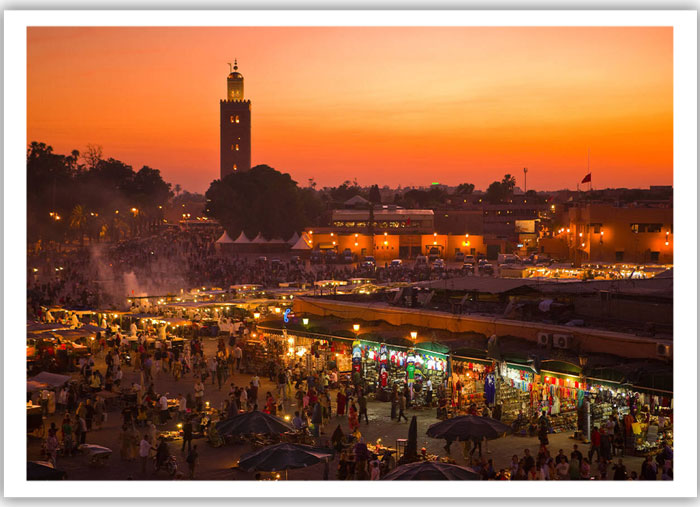
Explore Before You Go
Spending at least one or two nights in Marrakech allows you to adjust to the local pace and experience the city’s fascinating mix of old and new.
Top sights to visit:
-
Jemaa el-Fnaa: The beating heart of Marrakech. By day, it’s a maze of snake charmers and juice vendors; by night, it transforms into a sea of food stalls and storytellers.
-
The Medina and Souks: Lose yourself in narrow alleys lined with spices, leather goods, carpets, and handcrafted souvenirs.
-
Koutoubia Mosque: The city’s landmark minaret visible from almost anywhere in Marrakech.
-
Bahia Palace and El Badi Palace: Stunning examples of Moroccan architecture and artistry.
-
Majorelle Garden and Yves Saint Laurent Museum: A peaceful oasis of color and design in the modern Gueliz district.
These sites offer a glimpse into Morocco’s heritage — from Islamic architecture to French influence — setting the tone for the journey ahead.
Preparing for the Road
Before leaving the city, take advantage of Marrakech’s services and convenience to get everything ready for the long drive.
-
Stock up on essentials: bottled water, snacks, and fuel (especially if heading out early).
-
Check your route: set your first destination — usually Aït Benhaddou or Ouarzazate — and review road conditions via Google Maps or Maps.me.
-
Money matters: ATMs are widely available in Marrakech but become rare in rural areas; carry enough Moroccan dirhams for smaller towns.
-
Car rental tips: choose a reliable agency with good reviews. Inspect the car thoroughly and make sure you understand the insurance terms and fuel policy.
Where to Stay
For a comfortable and authentic start, consider staying in a riad — a traditional Moroccan house with an inner courtyard.
Recommended areas:
-
Medina: for a traditional experience close to the souks and Jemaa el-Fnaa.
-
Gueliz or Hivernage: for modern hotels, restaurants, and easy parking.
After a day of exploration, unwind with a rooftop dinner overlooking the medina or visit a local hammam to relax before your adventure begins.
Cultural Snapshot
Marrakech is a blend of ancient tradition and modern energy. You’ll hear the call to prayer echoing through centuries-old minarets while luxury cafés and rooftop lounges bustle nearby. It’s this duality that makes Marrakech unforgettable — and the perfect transition point between Morocco’s urban charm and its wild natural beauty.
3. Through the High Atlas Mountains: Marrakech to Aït Benhaddou
Leaving Marrakech behind, the road to Merzouga quickly transforms into one of Morocco’s most scenic drives. As you head south, the flat plains give way to the rugged peaks of the High Atlas Mountains, a natural barrier separating the coastal and desert regions. This leg of the journey is not just about reaching your next stop — it’s about immersing yourself in Morocco’s breathtaking geography and traditional Berber culture.
Distance and Travel Time
-
Distance: Approximately 180 km (around 112 miles)
-
Driving Time: 4 to 5 hours, depending on stops and photo breaks
The road winds through dramatic mountain passes, offering spectacular views at every turn. Expect sharp bends, steep climbs, and some narrow sections — but the scenery more than makes up for the effort.
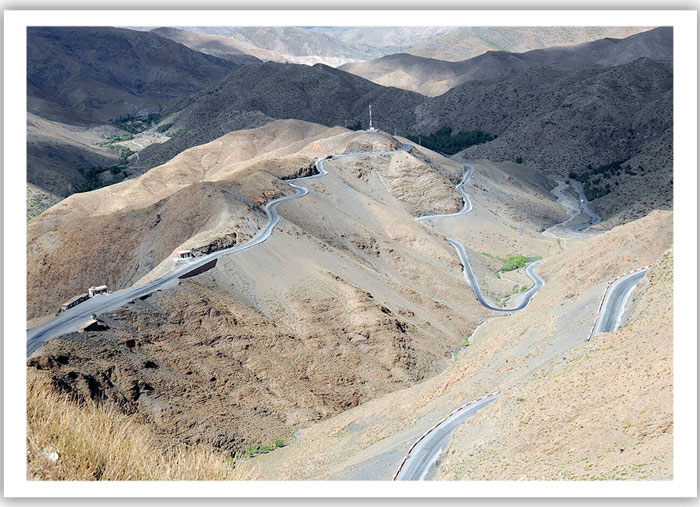
The Tizi n’Tichka Pass
One of Morocco’s most iconic mountain crossings, the Tizi n’Tichka Pass reaches an altitude of 2,260 meters (7,415 feet). This section is often called “the gateway to the Sahara,” and it truly feels like crossing into another world.
Along the route, you’ll encounter:
-
Small Berber villages built from red clay that blend into the landscape.
-
Roadside cafés serving mint tea and tagines with panoramic mountain views.
-
Artisans selling fossils, ceramics, and local crafts — perfect for a quick cultural stop.
During winter, the peaks are often dusted with snow, creating a striking contrast with the warm tones of the valleys below.
Telouet Kasbah: A Hidden Gem
About halfway to Aït Benhaddou, a short detour leads to Telouet, home to the Kasbah of the Glaoui family, once the seat of a powerful Berber dynasty. Although partly in ruins, the kasbah’s intricate zellige tiles and carved cedar ceilings reveal the wealth and influence it once commanded.
This stop is often overlooked by group tours, but for self-drivers, it’s a must-see — and a quiet, atmospheric glimpse into Morocco’s history.
Aït Benhaddou: The Desert’s First Landmark
Your day’s journey ends at the legendary Aït Benhaddou, a UNESCO World Heritage site and one of Morocco’s most photographed villages. Rising from the desert plain like a mirage, this fortified ksar (ancient settlement) is a masterpiece of traditional earthen architecture.
Walk across the shallow river to explore its maze of alleys, granaries, and towers. Climb to the top for panoramic views of the surrounding desert and the winding riverbed below.
Aït Benhaddou has also starred in numerous films and TV series, including Gladiator, Lawrence of Arabia, and Game of Thrones, giving it a cinematic aura that feels almost otherworldly.
Where to Stay
There are charming guesthouses and kasbah hotels around Aït Benhaddou and nearby Ouarzazate. Staying overnight allows you to explore the site early in the morning or at sunset, when the adobe walls glow golden under the desert light — a photographer’s dream.
Recommended options:
-
Kasbah Valentine – traditional stay with views of the ksar.
-
Riad Maktoub – comfortable rooms and rooftop terrace.
-
Dar El Haja – authentic family-run guesthouse inside the ksar itself.
Insider Tip
Leave Marrakech early to make the most of this day. Driving through the mountains is safest in daylight, and you’ll want time to stop for photos and breaks. Be sure to fill up your tank before leaving the city, as petrol stations become less frequent after the Tizi n’Tichka Pass.
4. ouarzazate : morocco’s “hollywood of africa “
After leaving Aït Benhaddou, the road leads you toward Ouarzazate, a sun-drenched desert city often called “The Gateway to the Sahara.” Located about 30 kilometers from Aït Benhaddou, Ouarzazate sits at the intersection of the Draa, Dades, and Ziz valleys, making it a natural crossroads between Morocco’s mountains and its vast southern deserts.
Ouarzazate has a unique atmosphere — part cinematic, part traditional. It’s quieter than Marrakech, yet rich in history, architecture, and film culture. For many travelers, this is the ideal place to rest, refuel, and explore before continuing deeper into the desert.
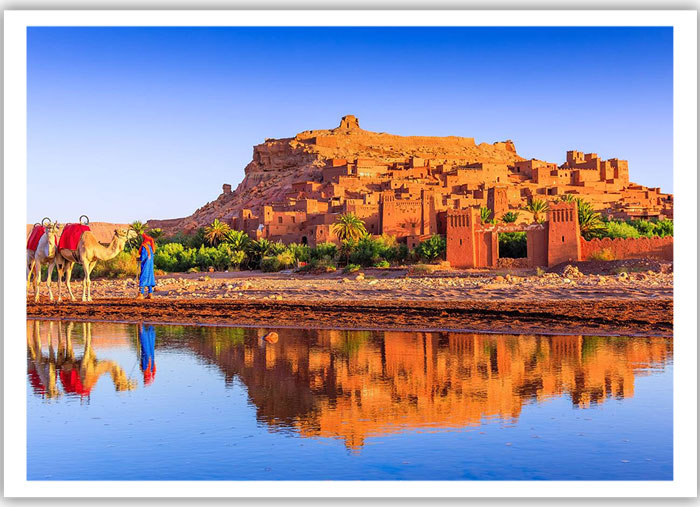
Why Ouarzazate is Called “Hollywood of Africa”
Ouarzazate’s stunning landscapes and clear light have attracted filmmakers from around the world for decades. You’ll quickly notice how familiar the surroundings feel — countless Hollywood productions have been filmed here, turning this desert city into an open-air movie set.
Famous films and series shot in Ouarzazate and nearby Aït Benhaddou include:
-
Lawrence of Arabia
-
Gladiator
-
Kingdom of Heaven
-
The Mummy
-
Game of Thrones
The Atlas Film Studios, one of the largest in the world, is a must-visit attraction. Visitors can tour enormous sets, including replicas of Egyptian temples, biblical palaces, and ancient cities — all standing in the middle of the desert.
Cultural and Historical Highlights
Beyond its cinematic fame, Ouarzazate offers a glimpse into Morocco’s southern heritage.
-
Taourirt Kasbah: Once the residence of the powerful Glaoui family, this labyrinthine fortress dominates the city’s center. Wander through its maze of corridors and admire the beautifully decorated rooms filled with traditional motifs and desert charm.
-
Musee du Cinema: Located near the kasbah, this small museum showcases movie props, costumes, and behind-the-scenes stories from decades of filmmaking.
-
Fint Oasis: Just 15 kilometers outside the city, this hidden green valley of palms and small Berber villages provides a refreshing contrast to the dry surroundings. It’s an excellent short detour for photography or a local meal with a view.
Where to Stay
Ouarzazate has a wide range of accommodation, from budget guesthouses to luxury kasbah-style hotels.
Recommended options:
-
Le Berbere Palace: A five-star hotel famous for hosting film crews and offering top-tier comfort.
-
Dar Kamar: Boutique guesthouse set inside a restored kasbah, blending tradition and modernity.
-
Hotel La Perle du Sud: Affordable, with a pool and central location — great for short stays.
Spending one night in Ouarzazate allows you to explore its landmarks and enjoy a comfortable rest before the next part of your road trip.
Optional Detour: Skoura Oasis
If you have time, take a short drive east to Skoura, about 40 kilometers away. This fertile palm grove, known as the “Valley of a Thousand Kasbahs,” is dotted with traditional mud-brick fortresses and charming guesthouses. One of the highlights is Kasbah Amridil, featured on Morocco’s 50-dirham banknote — a beautiful example of desert architecture still inhabited by locals today.
Travel Tips
-
Ouarzazate has good facilities for travelers: ATMs, supermarkets, and petrol stations.
-
It’s a great place to buy desert essentials — scarves, sunglasses, and light clothing.
-
Roads from here become straighter and more open as you approach the Dades Valley, making driving easier.
🚗 Ready to Embark on Your Marrakech to Merzouga Adventure?
Plan your ultimate Moroccan road trip today! Explore the High Atlas Mountains, ancient kasbahs, palm oases, and the breathtaking Sahara dunes. Book your car, map your route, and discover the magic of Morocco at your own pace.
👉 Start Planning Your Journey Now!
5. Skoura to Dades Valley: The Road of a Thousand Kasbahs
Leaving Ouarzazate behind, the journey toward the Dades Valley is one of Morocco’s most visually stunning stretches. This section of your Marrakech to Merzouga road trip is often called “The Road of a Thousand Kasbahs” — a poetic name that perfectly captures the essence of the region. Here, lush palm groves, traditional mud-brick fortresses, and winding river valleys create a landscape that feels timeless and cinematic.
Distance and Driving Time
-
Distance: Around 120 kilometers (75 miles)
-
Driving Time: 2 to 3 hours, depending on stops
This leg of the journey takes you east through Skoura Oasis, then along the Valley of Roses, before reaching the dramatic Dades Gorges. The road is well-maintained, offering smooth driving and plenty of opportunities to stop for photos or to explore local villages.
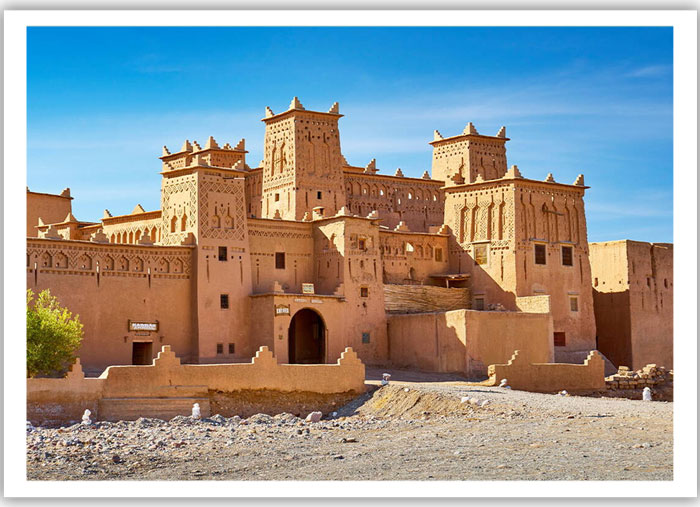
Skoura Oasis: A Green Gem in the Desert
Skoura is a lush, fertile valley filled with palm groves, olive trees, and pomegranate orchards — a peaceful contrast to the dry mountains that surround it. It’s one of the few oases still inhabited and farmed traditionally.
What to see in Skoura:
-
Kasbah Amridil: The most famous kasbah in the oasis, dating back to the 17th century. Its towers, courtyards, and preserved architecture offer a real glimpse of desert life centuries ago.
-
Palm Grove Walks: Take a short walk or bike ride among the palms, where locals still use ancient irrigation channels called khettaras.
-
Local Guesthouses: If you stayed overnight here, enjoy the tranquility — the sunrise light filtering through the palms is magical.
The Valley of Roses
Continuing east, the road follows the M’Goun River through the Valley of Roses, named after the Damask roses cultivated here for centuries. Every May, the nearby town of Kelaat M’Gouna hosts the famous Festival of Roses, celebrating the harvest with music, dancing, and markets selling rose water, perfumes, and oils.
Even outside the festival, this region is worth exploring — the terraced fields, clay villages, and pink hues of the mountains create an unforgettable landscape.
The Dades Valley and Gorges
After Kelaat M’Gouna, the road climbs gradually into the Dades Valley, where the scenery becomes increasingly dramatic. This area is often described as “Morocco’s Grand Canyon” — a series of red and orange cliffs carved by the Dades River over millennia.
Highlights:
-
Boumalne Dades: The main town at the entrance of the gorges. It’s a good base for accommodation and local excursions.
-
The Monkey Fingers Rock Formation: Strange, finger-like cliffs that seem to grow out of the earth — a great photo stop.
-
The Dades Gorge Road (Tizi n’Boulmane): A winding mountain road famous for its zigzag turns and breathtaking viewpoints. Drive carefully, and stop at the Hotel Café Timzzillite panoramic terrace for one of the best views in southern Morocco.
Where to Stay
Spend one night in the Dades Valley to soak up the scenery and hospitality. Many family-run riads and guesthouses overlook the valley or are nestled within the gorge itself.
Recommended stays:
-
Auberge Chez Pierre: Known for stunning views and excellent cuisine.
-
Riad Dades Paradise: A cozy stay with terraces overlooking the river.
-
Kasbah Tizzarouine: Offers traditional architecture and modern comfort.
Travel Tips
-
The roads in this area are narrow but generally well-paved. Drive slowly through villages and watch for livestock crossing.
-
Evenings can get cool, so bring a light jacket.
-
Make sure your camera or phone is fully charged — this section offers some of the most photogenic landscapes of the entire trip.
6. Todra Gorge: Nature’s Masterpiece
After exploring the Dades Valley, your journey continues toward the Todra Gorge, one of Morocco’s most dramatic natural wonders. This section of the Marrakech to Merzouga road trip offers a mix of adventure, stunning scenery, and insight into traditional Berber mountain life.
Distance and Driving Time
-
From Dades Valley to Todra Gorge: Approximately 80 kilometers (50 miles)
-
Driving Time: Around 2 hours
The route between Dades and Todra winds through arid hills and small villages before reaching Tinghir (or Tinerhir) — the gateway to the Todra Gorge. From Tinghir, it’s a short drive into the gorge itself, where the scenery suddenly becomes jaw-dropping.
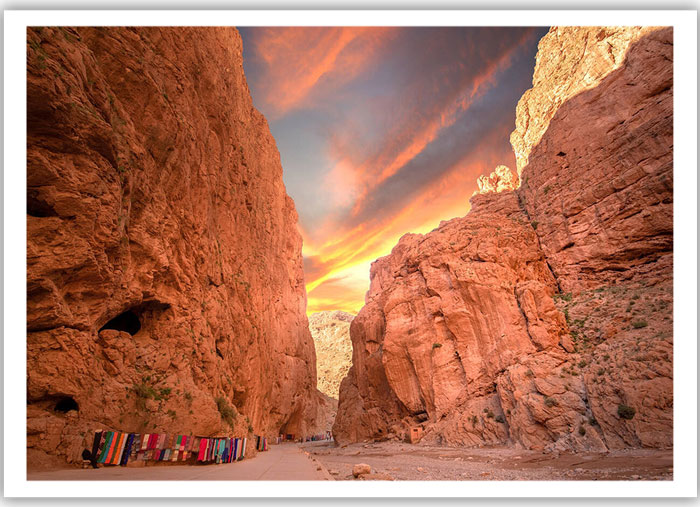
The Road to Todra Gorge
The approach to Todra is spectacular. You’ll pass through lush palm groves and ancient mud-brick villages clinging to the hillside, all framed by the High Atlas Mountains. As you drive deeper, the canyon walls rise higher and higher — eventually towering up to 300 meters (984 feet) on either side.
The final stretch of road follows the Todra River, which continues to carve its way through the rock, leaving behind a narrow passage where sunlight barely reaches the ground in some spots.
What to See and Do
1. Explore the Gorge on Foot:
Park your car and take a walk through the narrowest section of the canyon. The towering limestone walls, glowing in shades of orange and gold, make this one of Morocco’s most photographed spots. Early morning or late afternoon light creates a magical atmosphere for photos.
2. Rock Climbing:
Todra Gorge is world-famous among rock climbers. With more than 150 climbing routes, it attracts adventurers from across the globe. Even if you’re not climbing, watching professionals scale the cliffs is an impressive sight.
3. Visit Tinghir Oasis:
Before or after your visit, explore the Tinghir Palm Grove — a beautiful stretch of greenery filled with date palms, olive trees, and small farms. Walking paths lead through the oasis and traditional Berber villages, offering a glimpse of local life.
4. Local Handicrafts:
The nearby villages sell handmade carpets, fossils, and pottery. Bargaining is expected, but always done with a smile.
Where to Eat and Stay
You’ll find small cafés and restaurants near the entrance to the gorge, many serving tagines, couscous, and fresh orange juice with mountain views.
Recommended stays near Todra Gorge:
-
Auberge Le Festival Todra Gorge: Eco-lodge built into the rock itself, offering cave-style rooms and unbeatable views.
-
Hotel Kasbah Taborihte: Traditional Moroccan architecture and a pool overlooking the valley.
-
Maison d’Hôte Panorama Todra: A welcoming guesthouse with terrace views over the gorge.
Travel Tips
-
Best time to visit: Early morning or late afternoon for ideal lighting and cooler temperatures.
-
Footwear: Comfortable shoes are essential for walking on rocky terrain.
-
Photography tip: The contrast between shadow and sunlight in the gorge can be intense — use HDR or manual settings for best results.
-
Local Etiquette: Many families still live nearby. Always ask before photographing people or homes.
Why It’s a Must-See Stop
The Todra Gorge combines raw natural beauty with authentic Moroccan culture. Whether you’re hiking, taking photos, or simply sitting beside the river listening to the wind through the cliffs, it’s a place that captures the soul of the desert mountains.
7. Erfoud and Rissani: Gateway to the Sahara
After leaving Todra Gorge, the road opens up to the vast plains leading toward the Sahara Desert. This stage of the Marrakech to Merzouga road trip takes you through the towns of Erfoud and Rissani, small but culturally rich stops that serve as gateways to the golden dunes of Erg Chebbi.
Distance and Driving Time
-
From Todra Gorge to Erfoud: Approximately 150 kilometers (93 miles)
-
Driving Time: Around 2.5 to 3 hours
The journey transitions from mountain scenery to desert landscapes — rocky plateaus gradually give way to sandy expanses, palm groves, and sparse vegetation. It’s a visually dramatic shift, preparing travelers for the Sahara’s unique beauty.
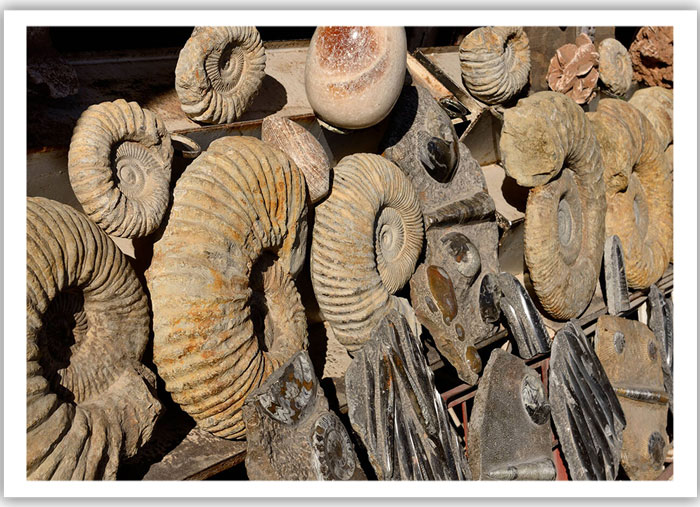
Erfoud: Fossils and Dates
Known as the “fossil capital” of Morocco, Erfoud is a small town with a rich history and practical amenities for travelers.
Highlights:
-
Fossil Workshops: Erfoud sits on ancient seabeds, and local artisans craft stunning fossil jewelry, decorative panels, and educational pieces. Perfect for souvenirs or photography.
-
Date Markets: The town produces some of Morocco’s finest dates. Sample deglet nour dates or enjoy date-based sweets and pastries.
-
Accommodation: Erfoud has a variety of hotels and desert lodges, ideal for an overnight stop before reaching Merzouga.
Rissani: Authentic Desert Life
Just a short drive from Erfoud, Rissani offers a more traditional Moroccan experience. Known as the historic caravan town that once linked Marrakech with the Sahara, Rissani is vibrant and full of life.
Things to do:
-
Rissani Souk: A bustling traditional market where you can buy spices, carpets, and Berber handicrafts. The atmosphere is lively, with local merchants calling out to shoppers.
-
Historic Sites: Explore the old ksar (fortified village) ruins and mausoleums of local saints.
-
Try Local Cuisine: Sample Madfouna, a Berber-style baked bread stuffed with meat and vegetables, cooked in a traditional clay oven.
Rissani gives travelers a sense of authentic desert culture that larger tourist hubs sometimes lack, making it a worthwhile stop before venturing into Merzouga.
Preparing for Merzouga
After Rissani, the final stretch to Merzouga is short — about 35 kilometers (22 miles) — but you’ll begin to notice the desert landscape dominating the horizon.
Travel tips for this leg:
-
Fill up on fuel and water in Erfoud or Rissani — services become scarce once you enter the dunes.
-
Carry snacks, sunscreen, and a hat for the desert heat.
-
Plan your arrival in Merzouga to coincide with either sunset or sunrise for the most magical dune experience.
Why Erfoud and Rissani Are Important Stops
These towns serve not just as practical waypoints but as cultural transitions. Erfoud introduces you to the natural history of the desert, while Rissani immerses you in the living traditions and commerce of desert communities. Stopping here ensures you arrive in Merzouga ready to fully appreciate the Sahara.
8. Merzouga and the Erg Chebbi Dunes
Finally, you reach Merzouga, the ultimate destination of this Marrakech to Merzouga road trip. Nestled at the edge of the Sahara Desert, Merzouga is a small village that opens onto the vast Erg Chebbi dunes, Morocco’s most famous sand sea. This is where the adventure truly comes alive — endless golden dunes, dramatic sunsets, and nights under a sky filled with stars.
Arrival and First Impressions
As you approach Merzouga, the flat desert landscape gradually gives way to rolling dunes that rise majestically from the earth. The colors shift throughout the day — from pale yellow in the morning to deep orange at sunset. It’s a photographer’s paradise and a sensory experience unlike anywhere else in Morocco.

Activities in Merzouga
Merzouga offers a variety of ways to experience the desert:
1. Camel Trekking:
The most iconic desert activity. Travel on the back of a camel through the dunes, ideally during sunset or sunrise, for breathtaking views. Many tours include an overnight stay in a desert camp.
2. Overnight Desert Camp:
Experience traditional Berber hospitality in a luxury or semi-traditional desert camp. Stay in tents equipped with comfortable bedding, enjoy local meals, and gather around a campfire beneath the stars.
3. Sandboarding and 4×4 Adventures:
For thrill-seekers, sliding down the dunes on a sandboard or exploring the desert in a 4×4 is exhilarating. Local guides provide equipment and ensure safety while showing hidden desert gems.
4. Stargazing:
Far from city lights, Merzouga’s night sky is extraordinary. The Milky Way, shooting stars, and constellations are visible in astonishing clarity — a magical desert experience.
Local Culture and Villages
Merzouga is also home to Berber communities who have lived in harmony with the desert for centuries. Visitors can explore small villages, interact with locals, and learn about traditional crafts, music, and desert survival skills.
Tips:
-
Respect local customs, especially when visiting private homes or villages.
-
Bargaining is common in the market, but always with respect and a smile.
-
Photography is welcome, but ask permission when capturing people’s portraits.
Where to Stay
Merzouga has accommodations ranging from luxury desert camps to budget guesthouses.
Recommended options:
-
Luxury Desert Camp: Spacious tents with private bathrooms, traditional cuisine, and camel rides included.
-
Auberge Chez Pierre: A cozy guesthouse at the base of the dunes with excellent local meals.
-
Nomad Palace: Offers authentic Berber-style accommodations and dune excursions.
Staying at least one night in Merzouga is essential — it allows you to witness both sunrise and sunset over the dunes, which are completely different but equally spectacular.
Travel Tips
-
Best time to visit: Early morning for sunrise, late afternoon for sunset, and clear nights for stargazing.
-
Clothing: Lightweight layers, a scarf for sand, hat, sunglasses, and sunscreen. Nights can be chilly, so bring a warm layer.
-
Hydration: Carry water, especially during treks or dune climbs.
-
Guides: Hiring a local guide enhances safety and enriches the experience with cultural insights.
Why Merzouga is the Highlight
Merzouga and the Erg Chebbi dunes are the culmination of your road trip — a place where natural beauty, adventure, and local culture converge. From camel rides to starlit nights, the desert offers moments of quiet reflection and unforgettable memories. It’s the ultimate reward after days of exploring mountains, valleys, and oases on the road from Marrakech.
9. Optional Return Routes
After experiencing the magic of Merzouga, travelers face a choice: retrace their steps back to Marrakech or continue exploring Morocco along alternative routes. This section of the Marrakech to Merzouga road trip outlines options for returning or extending your journey, helping you plan a memorable conclusion.
Option 1: Return via the Same Route
The simplest choice is to drive back the same way you came, allowing for additional stops or more relaxed pacing.
Highlights along the return:
-
Todra Gorge and Dades Valley: Catch sites you may have missed or revisit for different lighting and photography opportunities.
-
Ouarzazate and Aït Benhaddou: Spend another night at a kasbah or explore small villages along the way.
-
High Atlas Mountains: Enjoy the mountain scenery once more, especially if driving during sunrise or sunset.
Advantages:
-
Familiar roads reduce navigation stress.
-
Opportunity to stop at favorite locations again.
-
Allows travelers to maintain a more structured schedule.
Option 2: Return via Fez (Circular Route)
For a longer, more adventurous route, you can head north from Merzouga toward Fez, passing through Errachidia, Ifrane, and Midelt.
Highlights along this route:
-
Ifrane: Often called “Little Switzerland,” known for its alpine-style architecture and clean streets.
-
Middle Atlas Mountains: Scenic forests, lakes, and traditional Berber villages.
-
Azrou: Famous for its cedar forests and Barbary macaques.
-
Fez: Morocco’s cultural and spiritual capital, with a medina considered one of the world’s largest and most authentic.
Advantages:
-
Creates a circular route that covers a different part of Morocco.
-
Introduces a new mix of landscapes: desert, mountains, and forests.
-
Provides opportunities for cultural immersion in Fez’s medina and crafts markets.
Option 3: Continue to the Sahara’s Southern Regions
Some travelers prefer to extend their desert adventure by heading south toward Zagora, M’Hamid, or even crossing into Mauritania for extended desert exploration.
Highlights:
-
Vast empty desert landscapes with fewer tourists.
-
Authentic Berber villages and nomadic culture.
-
Opportunities for multi-day camel treks or desert camping under more remote conditions.
Advantages:
-
Avoid retracing the same route.
-
Deepen your Sahara experience.
-
Ideal for adventurous travelers seeking solitude and extreme landscapes.
Travel Tips for the Return
-
Fuel and Supplies: Always refuel before leaving Merzouga; long stretches of road have few petrol stations.
-
Road Conditions: Roads toward Fez are generally good but can be mountainous and winding.
-
Time Management: Plan driving hours to avoid night driving in remote areas, particularly if self-driving.
-
Accommodation: Book ahead, especially in Fez or Ifrane, during peak tourist seasons.
Why Considering Return Routes Matters
The journey back can be as rewarding as the trip out. Choosing the right return route allows travelers to explore different landscapes, historical towns, and cultural highlights, extending the adventure while ensuring a safe and enjoyable experience.
10. Practical Tips for the Marrakech to Merzouga Road Trip
A successful road trip across Morocco requires preparation, local knowledge, and a few insider tips. This section provides practical advice to help travelers navigate the journey safely, comfortably, and enjoyably.
1. Driving Tips
-
Road Conditions: Most main roads are paved and well-maintained, but expect narrow mountain passes, sharp turns, and occasional potholes. Drive cautiously, especially in the High Atlas Mountains.
-
Traffic: In rural areas, watch for donkeys, livestock, and slow-moving trucks. In towns, expect pedestrians and chaotic intersections.
-
Speed Limits: Stick to posted limits — generally 60–80 km/h in towns and 100–120 km/h on highways.
2. Navigation
-
Offline Maps: Download offline maps from Google Maps or Maps.me, as mobile coverage may be limited in mountains and desert regions.
-
GPS Devices: Useful if your smartphone battery is low, but always carry a paper map as a backup.
-
Local Advice: Don’t hesitate to ask locals for directions — Moroccan drivers are often very helpful.
3. Safety
-
Travel During Daylight: Avoid night driving in remote areas, as street lighting is minimal and road conditions can be challenging.
-
Emergency Numbers: Morocco’s general emergency number is 19, and roadside assistance may take time in remote areas.
-
Health Precautions: Carry a basic first-aid kit and enough water, especially when crossing the desert.
4. Money and Payments
-
Cash: Many small towns and desert villages do not accept cards. Carry sufficient Moroccan dirhams for fuel, meals, and souvenirs.
-
ATMs: Available in major towns like Marrakech, Ouarzazate, Erfoud, and Rissani. Fill up before heading into the desert.
-
Tipping: Expected in restaurants, hotels, and for guides. 10–15% is standard.
5. Accommodation Tips
-
Booking: During peak season (spring and autumn), book ahead for Merzouga and mountain regions.
-
Riads and Kasbahs: Offers authentic Moroccan experiences with traditional décor.
-
Desert Camps: Check reviews for comfort, food quality, and camel trek inclusions.
6. Packing Essentials
-
Lightweight clothing for daytime heat and warm layers for cool nights.
-
Sunglasses, hat, and sunscreen to protect from the strong desert sun.
-
Comfortable walking shoes for mountain passes and desert dunes.
-
Reusable water bottle and snacks for long stretches between towns.
-
Camera, power bank, and spare batteries — the scenery is stunning at every stop.
7. Cultural Etiquette
-
Dress Respectfully: Morocco is a Muslim-majority country; modest clothing is appreciated in villages and rural areas.
-
Photography: Always ask permission before photographing people, particularly women.
-
Greetings: A simple “Salam Alaikum” (peace be upon you) is appreciated and opens doors to friendly interactions.
8. Fuel and Food Stops
-
Refuel frequently — gas stations are sparse in the desert.
-
Try local cuisine at small roadside cafés: tagines, couscous, and fresh fruit juice.
-
Carry water and snacks for long drives between villages and oases.
Conclusion: Wrapping Up the Marrakech to Merzouga Road Trip
The journey from Marrakech to Merzouga is more than just a road trip; it is an unforgettable adventure that immerses travelers in Morocco’s diverse landscapes, rich culture, and timeless traditions. From the vibrant medina of Marrakech to the towering golden dunes of Erg Chebbi, this route offers a perfect blend of history, natural beauty, and authentic experiences. Along the way, travelers encounter the breathtaking High Atlas Mountains with their winding passes and Berber villages, explore the historic kasbahs of Aït Benhaddou and the cinematic landscapes of Ouarzazate, and discover the dramatic gorges and lush palm oases of the Dades Valley and Todra Gorge. Cultural gems like Erfoud and Rissani provide a glimpse into desert life, with bustling souks, traditional crafts, and fossil workshops, before culminating in the ultimate desert experience of Merzouga — where camel treks, starlit nights, and panoramic sand dunes create memories that last a lifetime. This road trip stands out for its diverse scenery, cultural immersion, and perfect balance of adventure and relaxation, offering countless photographic opportunities and moments of reflection. To make the most of this journey, travelers should plan at least 4–7 days, stay flexible to embrace spontaneous stops, respect local customs, and remain prepared for desert conditions. Driving from Marrakech to Merzouga is a journey where history, culture, and nature converge, leaving every traveler with experiences and memories that will stay with them forever.
